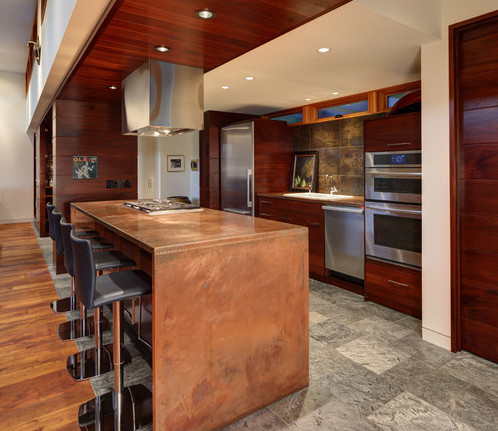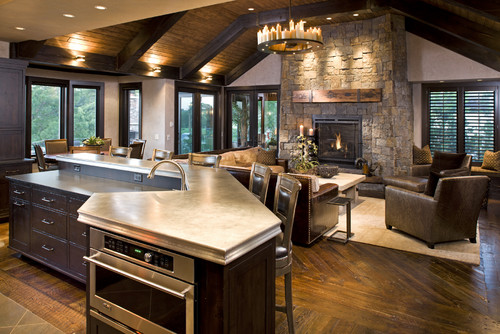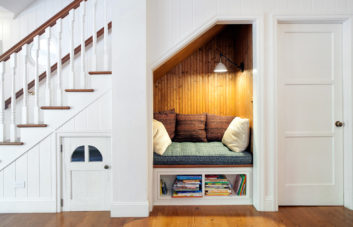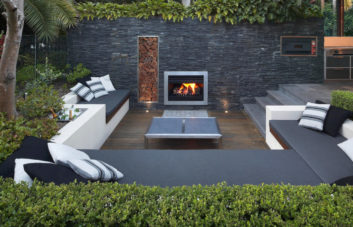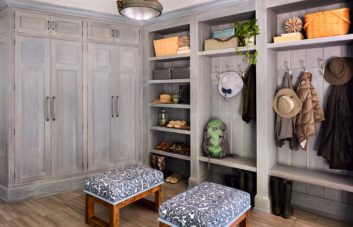Metal countertops? What is this, a professional-grade restaurant kitchen? Should it also have heavy-duty hoses and industrial appliances?
Was that your first reaction? You’re far from alone in that line of thought. The idea of metal countertops often evokes visions of yards of stainless steel punctuated by professional chef’s knives and oversized cooktops. But living metals like copper, zinc, and pewter are also popular countertop options, and for several good reasons.

These warm-toned metals often have antibacterial qualities, develop a patina over time, can be custom shaped (with optional integrated sinks) and detailed (think hammering or stamping) due to malleability, will not rust or stain, and are fairly easy to clean and maintain.
The downsides: the aforementioned patina often makes these counters look “broken in” even when they’re new (so not a good choice for the perfectionists among us); the soft metals dent, scratch, and can warp when exposed to heat (ditto); they’re expensive; and some, especially pewter, contain lead, so be cautious.
To summarize the pros and cons: if you love a living finish that will change over time, will embrace the signs of wear and tear, want an unusual and eye-catching countertop, and can afford the expense, metal countertops may very well be the right choice for you. If you truly love them but are worried about the pattern of wear, opt for a hammered or professionally patinated finish.

